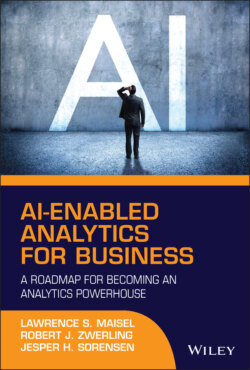Читать книгу AI-Enabled Analytics for Business - Lawrence S. Maisel - Страница 30
BIG IS NOT BETTER
ОглавлениеThere is a tendency, especially with IT, to “boil the ocean” on big data AI and analytics projects. While these can deliver a high return to the business, they are complex, long, and expensive, with price tags that only larger companies can afford. The risks are higher in this approach as it has many moving parts that require the integration of large infrastructure and people with specialized technical skills to communicate, coordinate, and collaborate with people who know the business to define the requirements and deliver a usable application.
However, analytics need not start here. In fact, it is better to start with a small to mid-size project because it is fast to value—and that value, when seen by others, begets the buy-in for more value, and so on. Smaller size also means lower cost, complexity, and risk.
A great start is simply automating existing spreadsheet reports in AI-enabled analytics tools. This has three immediate benefits: (i) it frees staff bandwidth by automating much of their time-consuming manual work in compiling spreadsheet reports; (ii) once the data is in the analytics tool, you get the analytics on the data as a by-product; and (iii) when staff reclaim bandwidth and have analytics, they now have time to explore their data to reveal insights for better decisions and planning.
This approach enables the rapid institutionalization of analytics: that is, since the reports to be automated are already part of the business process, the medium by which reporting is created becomes part of that process, too. So, without consciously launching analytics, you have launched analytics.
This is the most powerful technique for executives to employ to start analytics, and it is the path with the lowest cost, shortest time, and lowest risk as it involves the least amount of organizational change management.
